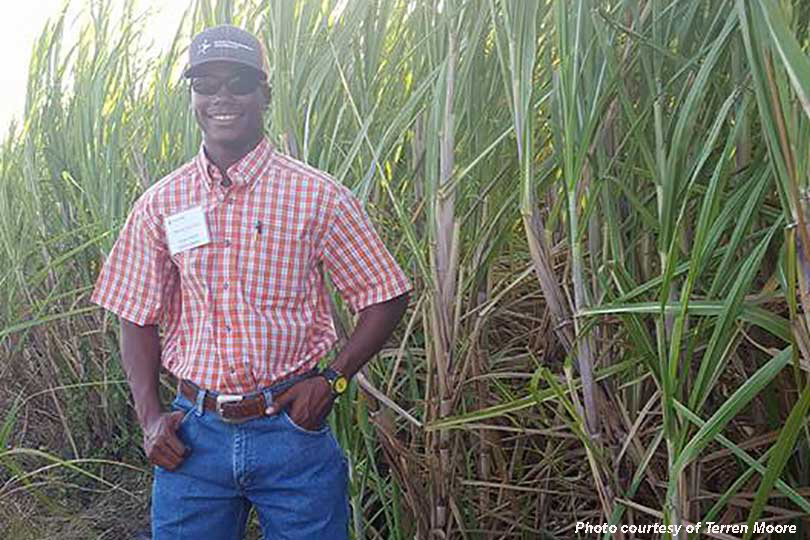By Shala Watson
Staff Writer
Young farmers and ranchers across Texas are cultivating a legacy and driving the trends, laying the groundwork for a strong, innovative future. And the recent Texas Farm Bureau (TFB) Young Farmer & Rancher (YF&R) Fall Tour helped them reignite passion, build connections and dive deeper into Texas agriculture.
This year’s tour took the farmers and ranchers to the Rio Grande Valley.
The Valley has a diverse climate with ideal growing conditions for many crops, including grapefruit, soybeans and sugarcane.
The tour included stops at the Rio Grande Valley Sugar Growers, Ross Gin, Rio Farms, Progreso International Bridge and the Texas A&M Research and Extension Center in Weslaco. The group also visited the Museum of South Texas History and La Muneca Cattle Company.
Among this year’s Fall Tour participants was Terren Moore. He’s a college student who has been growing purple hull and cream peas for about five years in Smith County. Although his father has always farmed, he got his inspiration and drive to pursue agriculture from his high school agricultural science teacher and from participating in FFA.
“After I joined FFA, I told my father this is something I’d like to do and I’d like to pick up where you left off,” Moore said. “So he showed me how to operate the tractor and how to do maintenance on the tractor. He showed me how to plow, plant, disc, cultivate between the rows. He showed me all of that. Ever since then, I’ve kind of taken off with it and I’ve been doing it for about five years now selling produce to the community every summer.”
During the three-day trip, the group stopped at Sugar Growers, Inc., which is a member-owned cooperative made up of more than 126 growers in a three-county area and is one of the top 10 producers of raw sugar in the U.S.
Moore described the sugarcane planting and harvest process.
“They said that planting season runs from August to December and the maturity of the actual crop takes about 12 months,” Moore said. “Sugarcane requires about 40 or 50 inches of water and it kind of grows like grass. They do a pre-burning for the harvest.”
The group learned more about the grain transportation process near the border at their stop at the Progreso International Bridge, which connects Texas to Mexico.
Moore said the Mexican farmers travel along a service road to sell their grain to U.S. companies like ADM.
Another stop included the Texas A&M AgriLife Extension Office in Weslaco. Participants discussed fungal problems and insect and pest issues, like whiteflies, that farmers in the Valley face. They also saw several test plots, including milo, sugarcane and cowpeas, Moore noted.
Some of the unique challenges farmers in the Valley face were also discussed during the tour.
Some Rio Grande farmers have had trouble accessing their land if it goes between the United States and Mexico border. Transporting equipment from farm-to-farm also can be a hassle. Smaller gates make it difficult for combines and headers to fit through, forcing farmers to take their equipment apart, Moore noted.
Moore said the TFB YF&R program brings young farmers together and helps them prepare for the challenges they will face.
“The average age of the American farmer today is about 57 years old,” Moore said. “So unless you’re taking over the family farm, young farmers aren’t really jumping into agriculture. The input cost of getting into farming is so high where people almost aren’t willing to put up that money to do it.”
He said it was very inspirational to network with others in agriculture. The trip provides the opportunity for them to learn different practices that will work best on their farms and ranches.
“We all practice different farming techniques, whether it be me doing five acres or my friend doing 4,000 acres. We all have one goal in mind and that is to feed our fellow neighbor,” Moore said.
Discussions about commodity prices, new technology, markets and other issues during the Fall Tour sparked new ideas and perspectives among the group.
“I talked to farmers about the futures markets,” Moore said. “The price of corn right now is about $3.30 to $3.40. One man told me he got $4.50 for his corn because he learned how to deal with the futures markets. Another friend of mine was al

